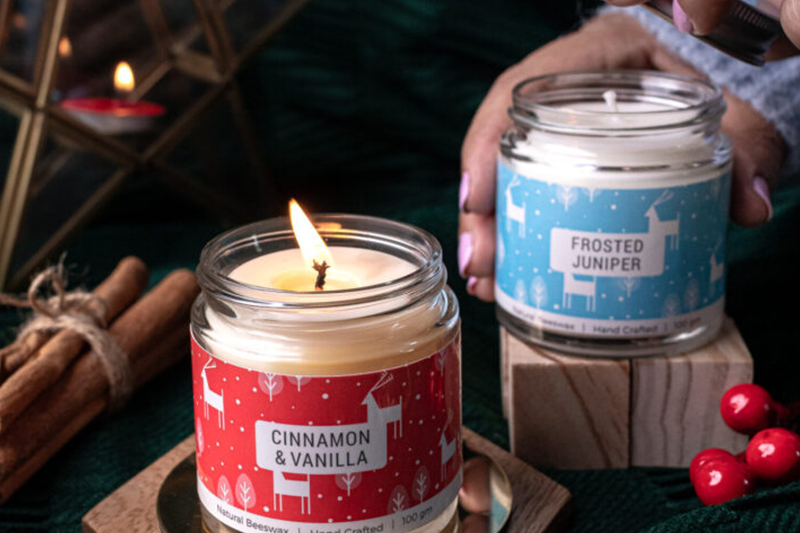Scented candles have the power to transform a space, filling it with delightful fragrances and creating a cozy ambiance. But how long can you expect your favorite scented candle to last? In this guide, we’ll explore the factors that affect the lifespan of scented candles, the different types of candle materials, and essential tips for extending their longevity.
Lifespan of Scented Candles
The lifespan of a scented candle can vary significantly depending on several factors. On average, a standard-sized scented candle can last anywhere from 25 to 60 hours. However, this estimate is just a guideline, and the actual burn time can be influenced by various factors.
Factors Affecting Scented Candle Lifespan
Several factors can affect how long a scented candle lasts, including the candle material, wick type, scent concentration, and storage conditions.
Candle Material
The type of wax used in a scented candle can have a significant impact on its burn time. Common candle materials include paraffin wax, soy wax, and beeswax.
- Paraffin Wax Candles: Paraffin wax candles are the most common type of candle and tend to have a shorter burn time compared to other materials. However, they often have a stronger scent throw.
- Soy Wax Candles: Soy wax candles are known for their longer burn times and cleaner burn compared to paraffin wax candles. They also tend to be more environmentally friendly.
- Beeswax Candles: Beeswax candles are known for their natural aroma and long burn times. They are also believed to have air-purifying properties.
Wick Type
The type of wick used in a scented candle can also affect its burn time. A thicker wick typically burns faster and produces a larger flame, while a thinner wick burns slower and produces a smaller flame.
Scent Concentration
The concentration of fragrance oils in a scented candle can impact its burn time. Candles with a higher concentration of fragrance oils tend to burn faster but may also have a stronger scent throw.
Storage Conditions for Scented Candles
Proper storage is essential for maintaining the quality of scented candles and extending their lifespan. Store candles in a cool, dry place away from direct sunlight and heat sources. This helps prevent the wax from melting or becoming discolored.
Signs of a Burning Out Scented Candle
There are several signs that indicate a scented candle is burning out, including:
- The flame becomes small and flickers frequently.
- The wax pool around the wick starts to deepen.
- The scent becomes faint or disappears altogether.
Candle Care and Maintenance
To extend the life of your scented candles, follow these tips:
- Trim the wick to about 1/4 inch before each use to prevent soot and ensure an even burn.
- Avoid burning candles in drafty areas to prevent uneven burning and sooting.
- Use a snuffer or a wick dipper to extinguish the flame instead of blowing it out, which can cause soot and smoke.
DIY Methods for Reusing Old Candle Wax
Instead of throwing away old candle wax, consider repurposing it into new candles. Here are some DIY methods for reusing old candle wax:
- Melt the old wax and pour it into a new container with a new wick to create a layered candle.
- Use old candle wax as a base for homemade fire starters.
- Mix old candle wax with essential oils to create scented wax melts for a wax warmer.
Candle Safety Precautions
- Never leave a burning candle unattended.
- Keep candles away from flammable materials and out of reach of children and pets.
- Always place candles on a heat-resistant surface.
- Trim the wick to 1/4 inch before each use to prevent excessive smoking and soot buildup.
Environmental Impact of Scented Candles
While scented candles can enhance the ambiance of a space, it’s important to consider their environmental impact. Some candles contain paraffin wax, which is derived from petroleum and can release harmful chemicals when burned. To minimize the environmental impact of scented candles, opt for candles made from soy wax or beeswax, which are more sustainable options.
Common Misconceptions about Scented Candles
There are several misconceptions about scented candles, including:
- All scented candles are harmful to the environment.
- Scented candles are only for decorative purposes.
- Scented candles are expensive and not worth the investment.
In reality, scented candles can be eco-friendly, provide therapeutic benefits, and come in a range of prices to suit any budget.
Choosing the Right Scented Candle
When choosing a scented candle, consider the following factors:
- The size and type of the room you plan to use the candle in.
- Your personal preferences for scents and aromas.
- The purpose of the candle (e.g., relaxation, ambiance, etc.).
- Any allergies or sensitivities you may have to certain fragrances.
Aromatherapy Benefits of Scented Candles
Scented candles can have therapeutic benefits when infused with essential oils. Some common aromatherapy benefits of scented candles include:
- Relaxation and stress relief
- Improved mood and mental clarity
- Increased focus and concentration
- Enhanced sleep quality
In conclusion, the lifespan of scented candles can vary depending on several factors, including the candle material, wick type, and storage conditions. By following proper candle care and maintenance practices, you can extend the life of your scented candles and enjoy their soothing ambiance for longer periods.
FAQs
- How long does a scented candle typically last?
- The lifespan of a scented candle varies but usually falls between 25 to 60 hours, depending on various factors.
- Are soy wax candles better than paraffin wax candles?
- Soy wax candles are often considered better due to their longer burn times and eco-friendly nature.
- What is the best way to extinguish a candle?
- It’s recommended to use a snuffer or a wick dipper instead of blowing out the flame to prevent soot and smoke.
- Can I reuse old candle wax?
- Absolutely! There are various DIY methods to repurpose old candle wax, such as creating layered candles or scented wax melts.
- Are scented candles harmful to the environment?
- While some candles contain ingredients with environmental impacts, opting for soy wax or beeswax candles can minimize their footprint.

